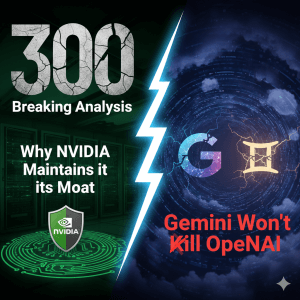At the Networking for AI Summit, I had the opportunity to speak with Anil Varanasi, Co-Founder and CEO of Meter, across two sessions that showcased both the company’s vertically integrated networking platform and its new AI-driven operations tool, Meter Command. Together, they highlight a vision for how enterprises can simplify networking today while preparing for tomorrow’s AI-driven environments.
Full-Stack Networking from the Ground Up
Meter has taken a different path from legacy vendors, who often assemble portfolios through acquisitions and then work to unify them. Instead, Meter has built a full-stack networking platform from scratch. The hardware, firmware, operating system, APIs, and applications are all tightly integrated. This design avoids the interoperability and configuration challenges that come from stitching disparate products together.
The impact of this approach is clear in customer examples. At one end of the spectrum, Bridgewater Associates, the world’s largest hedge fund, leverages Meter to meet stringent performance and compliance needs. At the other, Webb School, a 100-acre campus serving more than 1,000 students, was able to modernize its entire wireless environment in weeks at a fraction of the projected cost. In both cases, the outcome was a more reliable, secure, and agile network, without the burden of managing multiple vendors and dashboards.
Purpose-Built AI Models for Networking
A key theme across both sessions was Meter’s belief that networking requires its own AI models, not general-purpose large language models. Varanasi drew a comparison: just as no one would trust a chatbot to drive a car, enterprises shouldn’t trust generic models to manage production networks. Meter trains its own deterministic models on data collected across its unified stack, with the goal of achieving precision and reliability over creativity.
Partnerships with Microsoft Azure provide access to large GPU clusters, enabling models to be updated on a daily cadence. This combination of clean, vertically integrated data and cloud-scale compute underpins Meter’s vision of building accurate, production-grade models that networking teams can trust.
Introducing Meter Command
The second session focused on Meter Command, an AI-powered natural language interface that reimagines how network engineers interact with infrastructure. Command moves beyond the CLI and static dashboards to enable three key capabilities:
- Retrieve information: Ability to query switch states across remote locations.
- Take action: Such as create an SSID with rotating credentials across hundreds of APs.
- Generate software on the fly: Includes generating custom dashboards or charts built instantly at query time.
To ensure trust and safety, Command uses a human-in-the-loop validation process. Every action is reviewed, confirmed, and summarized for impact before execution. This balance allows teams to automate routine tasks confidently while still maintaining oversight of critical systems.
Another differentiator is collaboration. Command’s multiplayer canvas lets teams co-develop dashboards, debug together, and capture institutional knowledge. This not only accelerates troubleshooting but also helps preserve expertise as senior engineers retire and younger staff come on board.
Our ANGLE
Meter is carving out a unique position by pairing a vertically integrated networking stack with deterministic, purpose-built AI models and a natural language operations platform. The approach addresses two of the most pressing challenges in enterprise IT: the complexity of managing fragmented infrastructures and the shortage of skilled networking talent.
By emphasizing accuracy, production readiness, and collaborative workflows, Meter is providing both a modern foundation for AI-driven networking and a practical tool—Meter Command—that can augment engineers today. As enterprises advance into the AI era, solutions like these will play an increasingly critical role in making networks not only enablers of innovation but also accelerators of business outcomes.
For more information, please visit the Meter website.



